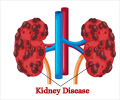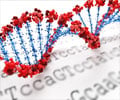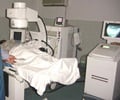Genetics researchers at the Children's Hospital of Philadelphia have discovered a second gene that causes Alagille syndrome
Genetics researchers at the Children's Hospital of Philadelphia have discovered a second gene that causes Alagille syndrome, a developmental disease with a genetic basis that affects many organs.
This finding may have broader implications in the understanding of kidney disorders. The Children's Hospital team had earlier discovered the first gene associated with this syndrome.The researchers found that mutations in the NOTCH 2 gene were linked to kidney abnormalities in patients and families. "While Alagille syndrome is relatively rare, organ diseases are not rare, and our findings suggest that genes on this biological pathway may have a broader role in kidney disorders," said study leader Nancy B. Spinner, Ph.D., a geneticist at The Children's Hospital of Philadelphia.
The study appears in the July issue of the American Journal of Human Genetics.
Dr. Spinner led the Children's Hospital team that identified mutations in the JAG1 gene as a cause of Alagille syndrome in 1997. Like the NOTCH2 gene analyzed in the current study, JAG1 is part of a signaling pathway that governs important processes in early human development.
Alagille syndrome, estimated to occur in one in 20,000 individuals, is a complex disorder, primarily affecting the liver, heart, eyes, face and skeleton. Some patients with Alagille syndrome have very mild symptoms or isolated problems, while others may have severe, life-threatening heart or liver defects.
Both the JAG1 and the NOTCH2 genes participate in the Notch signaling pathway. JAG1 codes for the ligand Jagged1, a signaling protein that triggers receptors in the pathway. The NOTCH2 gene codes for Notch2, which is one of those receptors. The pathway as a whole is active during embryonic development, and transmits signals to cells to develop into specialized organs. Mutations in those genes are thought to disrupt normal development, by, for instance, causing the defective bile ducts found in the livers of many patients with Alagille syndrome.
Advertisement
Dr. Spinner's team previously determined that 94 percent of patients diagnosed with Alagille syndrome had mutations in the JAG1 gene. In the current study, they analyzed 11 patients with Alagille syndrome who did not have the JAG1 mutation, and found that two of them had mutations in NOTCH2. Furthermore, the patients had three family members, all mildly affected, who also had the same mutation. All five individuals had kidney disease.
Advertisement
She also will investigate liver involvement in Alagille syndrome under the Rare Diseases Clinical Research Network, recently established by the National Institutes of Health. "Part of the rationale for this research network is that, collectively, relatively rare diseases added together constitute a significant portion of the population," said David A. Piccoli, M.D., chief of Gastroenterology and Nutrition at Children's Hospital and a co-author of the study. "Another rationale is that studying relatively rare diseases may offer insights into more common diseases and into health in general."
SOURCE:EUREKALERT











